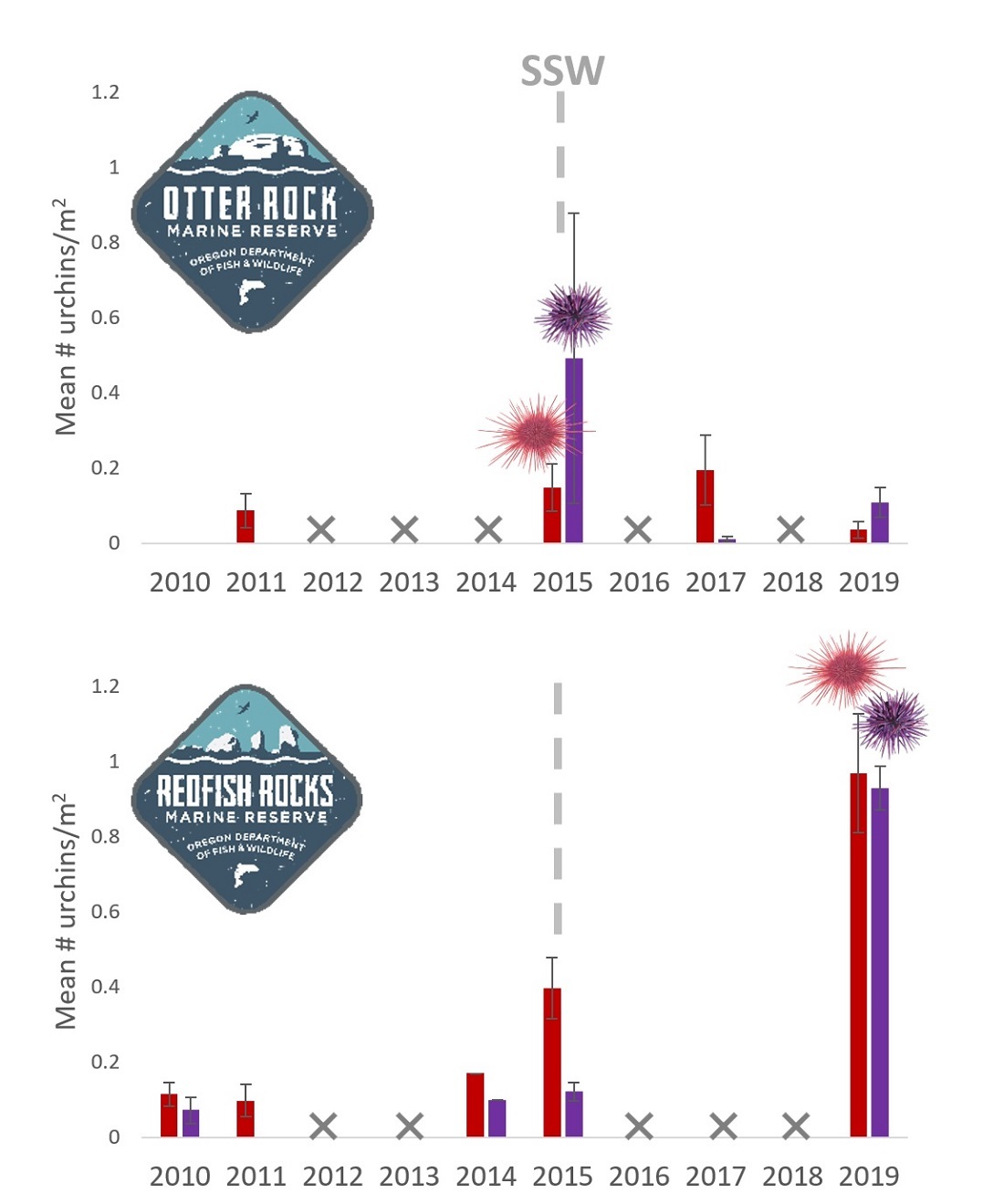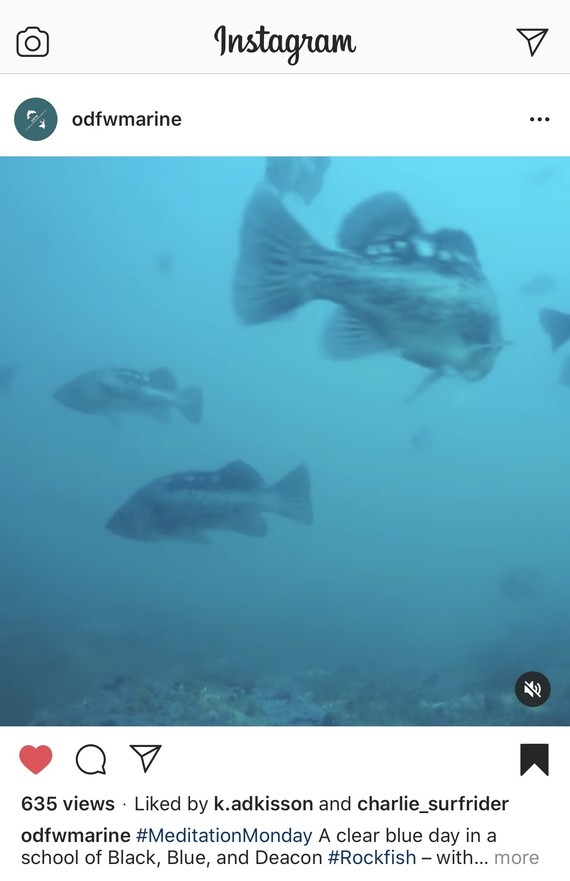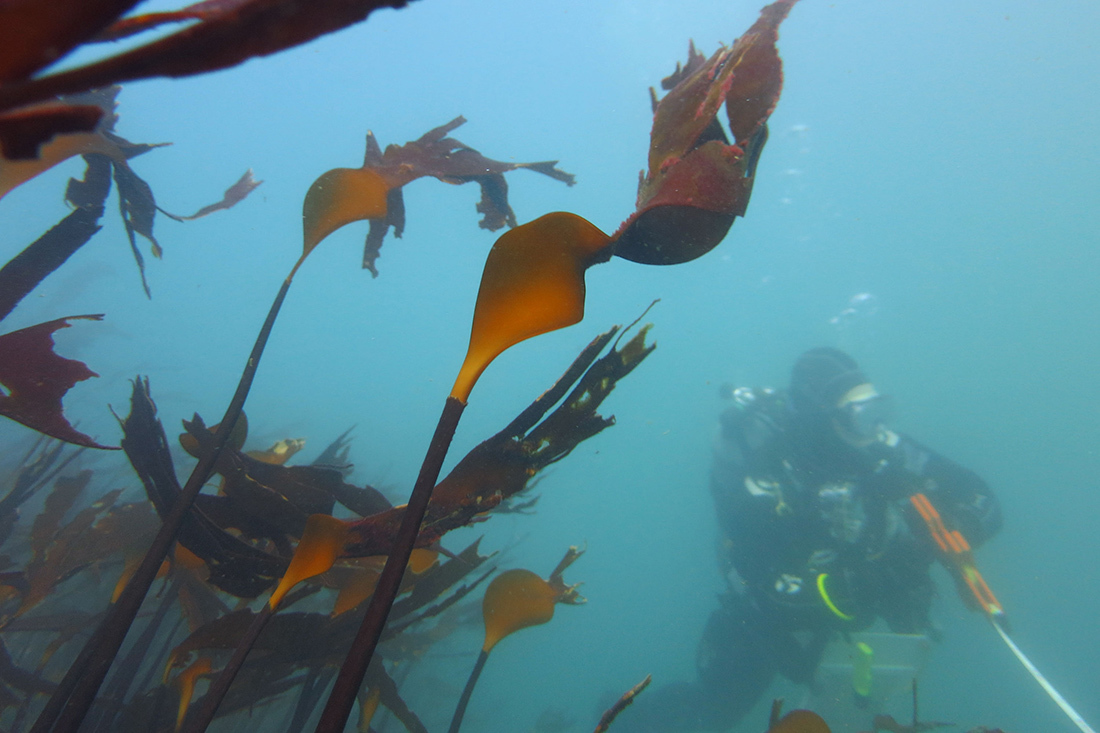Volunteer Diana Hollingshead:
A Deep Commitment To Discoveries & Safety
Diana Hollingshead has scarcely received notice from the ODFW Marine Reserves Program that the scientific dive surveys she volunteers for are being postponed due to the COVID-19 pandemic when she responds to our email requesting an interview to discuss her volunteer experiences with the program.
“Absolutely,” she replies enthusiastically, “If we can’t be in the water, let’s talk about diving!”
With decades of experience under her dive belt, Diana is no stranger to the challenges of scientific diving or the discoveries they can bring to the surface. We reached the Eugene resident by phone to discuss her unwavering volunteer service.
Diana is part of the covert operations that brave Oregon’s cold and murky waters, plunging beneath the surface to carry out marine reserve monitoring SCUBA surveys. These surveys occur in shallow rocky reef areas to monitor and track changes in macroalgae (seaweed), invertebrate, and fish communities.
 |
|
These are fast-paced and action-packed dives that require simultaneous attention to detail and a commitment to safety. “It’s harder than you might think,” she says of the scientific reconnaissance missions. |
When ocean conditions permit, which includes a minimum three meters of underwater visibility, pairs of divers drop from the deck of the boat and swim down to depths between 10 and 20 meters. Once beneath the surface, divers remain under for around 45 minutes while they survey the seafloor and water column above. Teams can conduct up to three surveys per day.
“It was natural,” she says of pairing her technical diving and science skills and applying them to the SCUBA surveys, “they fit together perfectly. I love to dive and so it gave me an opportunity to volunteer for ODFW and see how quantities are changing and what species are changing and how range extensions are happening, what is considered an anomaly or what is just considered normal now. It has been interesting to see over the period of time.”
Discover more as we continue our talk with this SCUBA instructor, as she reflects on her experiences as a volunteer scientific diver and shares what she brings and gets out of these underwater missions. Plus you’ll find underwater video and photos from these expeditions.
Diving Into SCUBA Survey Data:
Urchins Before and After Sea Star Wasting Disease
Even though the ODFW Marine Reserves Program’s spring fieldwork has been postponed, we’ve been hard at work analyzing data. We are currently exploring the subtidal impacts of sea star wasting disease (SSW) using the data collected in our SCUBA surveys.
Sea stars are one of the dominant predators on rocky reefs, and are known to keep urchin populations (their prey) in check. Our diver surveys show that red and purple urchin densities have not responded the same across our marine reserves after the outbreak of SSW disease in 2015 (dashed line on figures).
 Urchin densities have significantly increased at Redfish Rocks Marine Reserve but not at Otter Rock Marine Reserve since the onset of SSW disease in Oregon. We are currently working to explore if these responses are linked to differences in habitat, community composition, or ocean conditions.
Note: Not all reserves were surveyed in all years; "x" indicates SCUBA surveys were not conducted that year.
Photo Contest:
Favorite Oregon Coast Experience

The ODFW Marine Reserves Program is hosting a photo contest over the next month to highlight some of the favorite photos you've taken over the years of the Oregon coast. The theme for this contest is your Favorite Oregon Coast Experience.
We've kept this theme broad to see the vast variety of ways that Oregonians see and experience our beautiful coast whether at the beach, in or on the water, or from high above in the sky. This could be a photo of a memorable sunset, a day spent on the water, or your favorite coastal creature.
We invite you to submit a single photo into the contest. After receiving submissions, we will pick several winners and feature these photos in our June eNewsletter. Additional photos may be highlighted on our social media platforms. We can't wait to see your best shots!
Please submit your entry by June 18, 2020. There are two methods by which you can submit your photo:
- If you have a Gmail account, this Google Form will allow you to submit a single photo. Please be sure to fill out your name and a brief description of the photo.
- Alternatively, you can submit the photo directly to our team member, Ryan Fields, at ryan.t.fields@state.or.us
Be sure to include “Photo Contest Entry” in the subject line, and provide your name and a brief description of the photo in the body of the email. Please limit your entry to one photo per person.
Note: By submitting a photo, you consent to ODFW using this photo in any publication including web-based newsletters, websites, social media, or printouts without payment or other consideration.
 Looking for a brief, under the sea, meditative moment to kickoff your week (#MeditationMonday)? Or perhaps wanting to experience research out on the ocean from the comfort of your kitchen table? Then we recommend following @odfwmarine on Instagram. Experience underwater videos and photos, and see marine research in action by ODFW scientists.
Explore More Marine Reserves News
|









